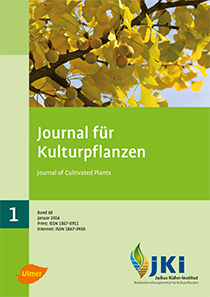Breeding of aspen and hybrid-aspen for short-rotation coppice – genotyping on test sites to detect root suckers
Keywords:
Populus, trembling aspen, progenies, biomass increment, microsatellite markersAbstract
The globally increased demand for energy resources resulted in an enhanced cultivation of energy crops, including the production of woody biomass in short rotation coppices. This type of cultivation has been presumed to be an alternative land use in recent years.
Aspen and hybrid aspen also grow on sandy and nutrient-poor soils. They are able to grow from the root stock and also from root suckers after harvesting the above-soil biomass. The shoots from root suckers contribute remarkably to the biomass yield in subsequent harvests.
We carried out many controlled pollinations with selected parent clones in our breeding programmes. The offspring families were tested on field trials to determine their performance. The strong potential of certain families to generate root suckers after the first harvest could influence the neighbouring plots in the field trails and thus distort the exact measurement of the biomass yield of some offspring families.
Samples from several plots were genotyped by nuclear microsatellite markers to assign them to their correct offspring family and to their original plot. Especially some hybrid aspen families exhibit a strong potential to propagate by root suckers, and thus influenced neighbouring plots. Conclusions for existing and new field trials were derived including aspects of landscape biodiversity.
DOI: 10.5073/JfK.2016.01.01, https://doi.org/10.5073/JfK.2016.01.01
Downloads
Published
Issue
Section
License
The content of the journal is licensed under the Creative Commons Attribution 4.0 License. Any user is free to share and adapt (remix, transform, build upon) the content as long as the original publication is attributed (authors, title, year, journal, issue, pages).
The copyright of the published work remains with the authors. The authors grant the Journal of Cultivated Plants, the Julius Kühn-Institut and the OpenAgrar repository the non-exclusive right to distribute and exploit the work.







